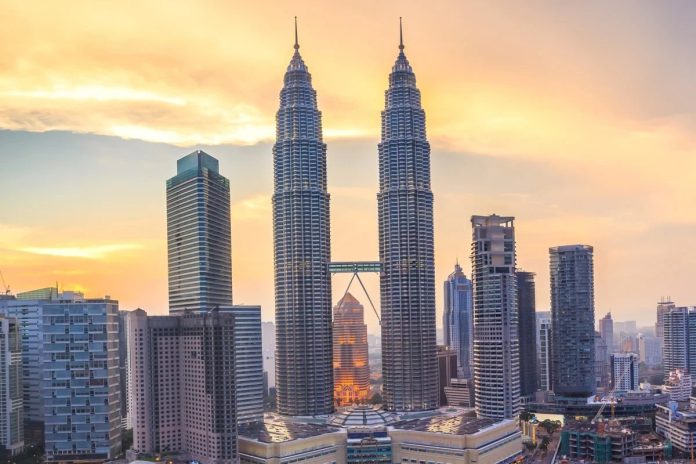It also called for the conflict to be handled in a peaceful and rational manner through dialogue and negotiations.
China claims sovereignty over almost the entire South China Sea – through which trillions of dollars in trade pass annually – despite an international court ruling that Beijing’s entitlement has no legal basis.
Malaysia, the Philippines, Vietnam and Brunei also have overlapping claims in parts of the sea, while the United States sends naval vessels through it to assert freedom of navigation in international waters.
China released a “standard map” this week that included its unilateral claims in the sea, which overlap with Malaysia’s exclusive economic zone off the coast of the Sabah and Sarawak states on Borneo island.
“Malaysia does not recognise China’s claims in the South China Sea, as outlined in the ‘China Standard Map 2023 Edition’ which covers Malaysia’s maritime area,” the foreign ministry said in a statement.
Describing the South China Sea issue as “complex and sensitive”, Kuala Lumpur said the dispute must be “handled peacefully and rationally through dialogue” based on international law.
Malaysia also said it supported the creation of a Code of Conduct for the sea, which Southeast Asian nations are currently negotiating.
Kuala Lumpur summoned Beijing’s envoy in 2021 after Chinese vessels entered its exclusive economic zone.
Malaysia says the South China Sea area it claims north of Borneo island – including five maritime features in the Spratly Islands chain – falls within that zone.
In recent years, China has ramped up development of artificial islands and outfitted some with military facilities and runways.
Other Southeast Asian nations have also accused Chinese vessels of harassing their fishing boats.
China’s foreign ministry spokesperson Wang Wenbin on Thursday said that it hopes relevant parties can see its map in an “objective and rational” way.
India also objected to ‘standard map’
“We reject these claims as they have no basis. Such steps by the Chinese side only complicate the resolution of the boundary question,” India’s External Affairs Ministry spokesman Arindam Bagchi said in a statement late on Tuesday.
This has exacerbated the tensions between China and India, which are embroiled in a three-year military stand-off along their shared border.
The version of the Chinese map published on Monday on the Ministry of Natural Resources website clearly shows Arunachal Pradesh and the Doklam Plateau, over which the two sides have feuded, included within Chinese borders, along with Aksai Chin in the western section that China controls but India still claims.
Indian External Affairs Minister Jaishankar Subhramanyam also dismissed China’s claim in a television interview on Tuesday night.
“Making absurd claims on India’s territory does not make it China’s territory,” he said.
China recently refused to stamp out visas on the passports of officials from Arunachal Pradesh state in India’s northeast, using a stapled-in certificate instead, implying the Chinese claim on the territory.
India’s foreign ministry said the two leaders agreed to intensify efforts to de-escalate tensions at the disputed border and bring home thousands of their troops deployed there.
“The two sides should bear in mind the overall interests of their bilateral relations and handle properly the border issue so as to jointly safeguard peace and tranquillity in the border region,” the Chinese Foreign Ministry said after the two leaders’ meeting.
Indian and Chinese military commanders had met earlier this month in an apparent effort to stabilise the situation.
A border, dubbed the “Line of Actual Control,” separates Chinese and Indian-held territories from Ladakh in the west to India’s eastern state of Arunachal Pradesh, which China claims in its entirety.
India and China had fought a war over their border in 1962. China claims some 90,000 square kilometres (35,000 square miles) of territory in India’s northeast, including Arunachal Pradesh with its mainly Buddhist population.
India says China occupies 38,000 square kilometres (15,000 square miles) of its territory in the Aksai Chin Plateau, which India considers part of Ladakh, where the current face off is happening.








































